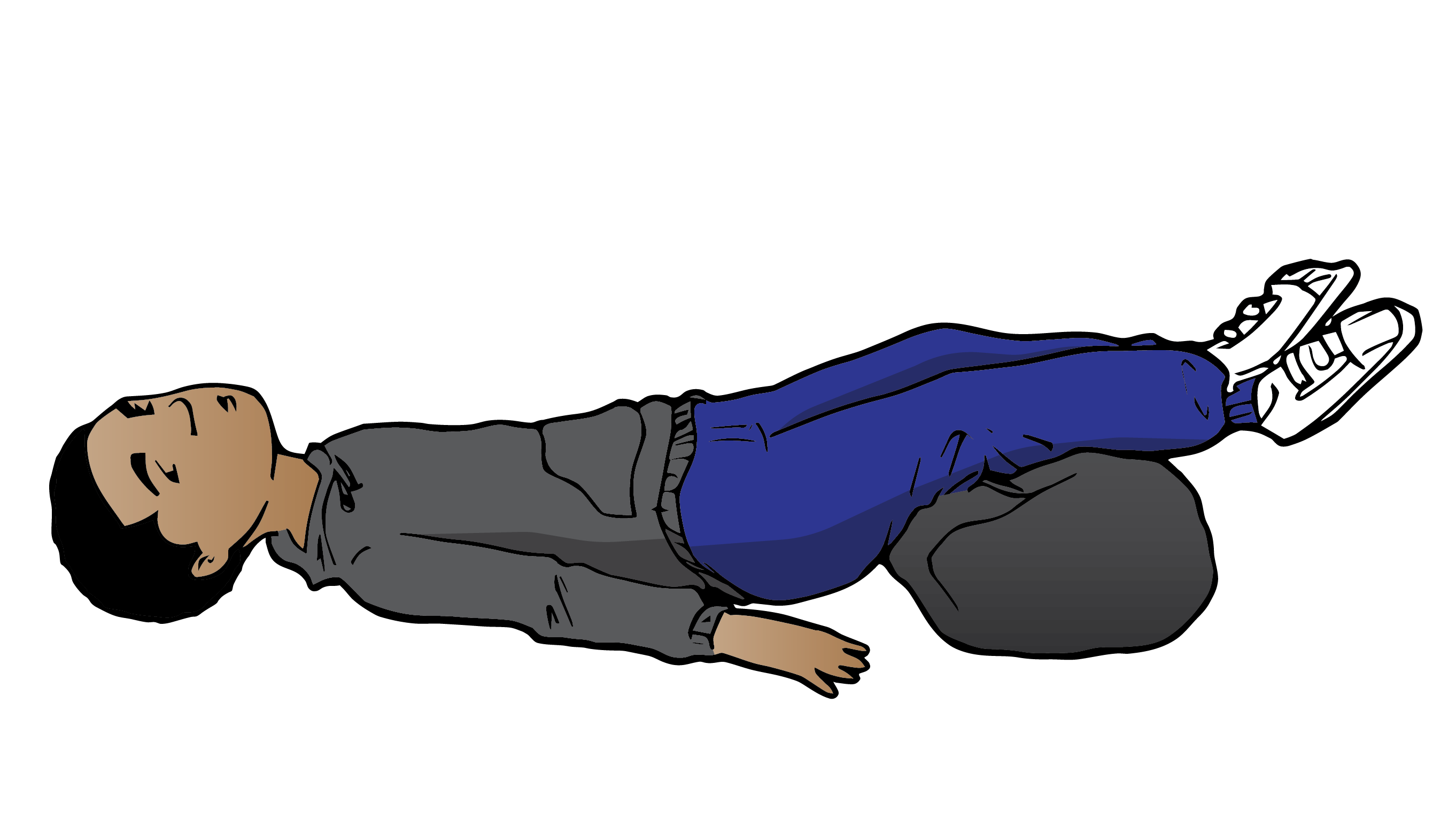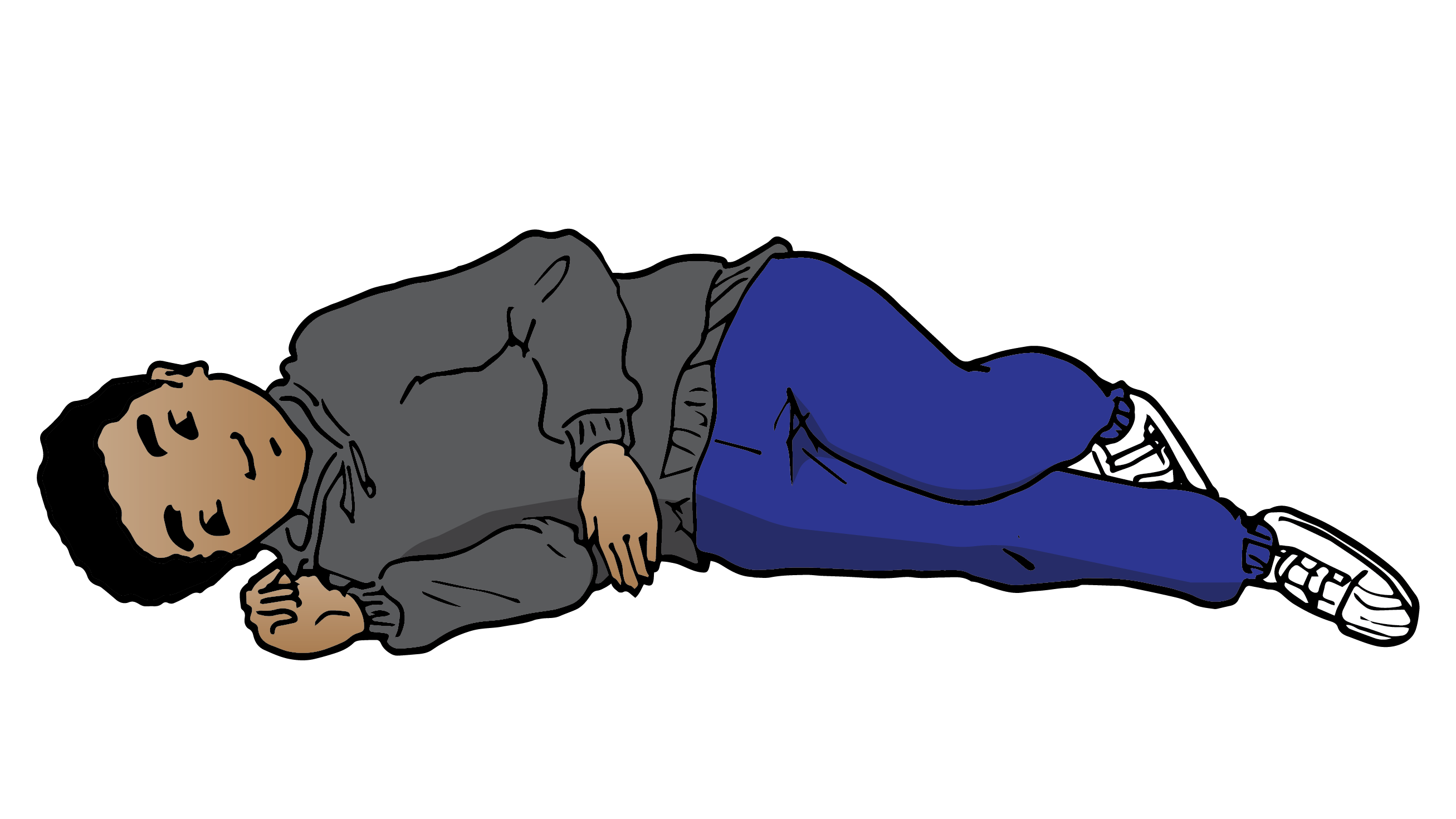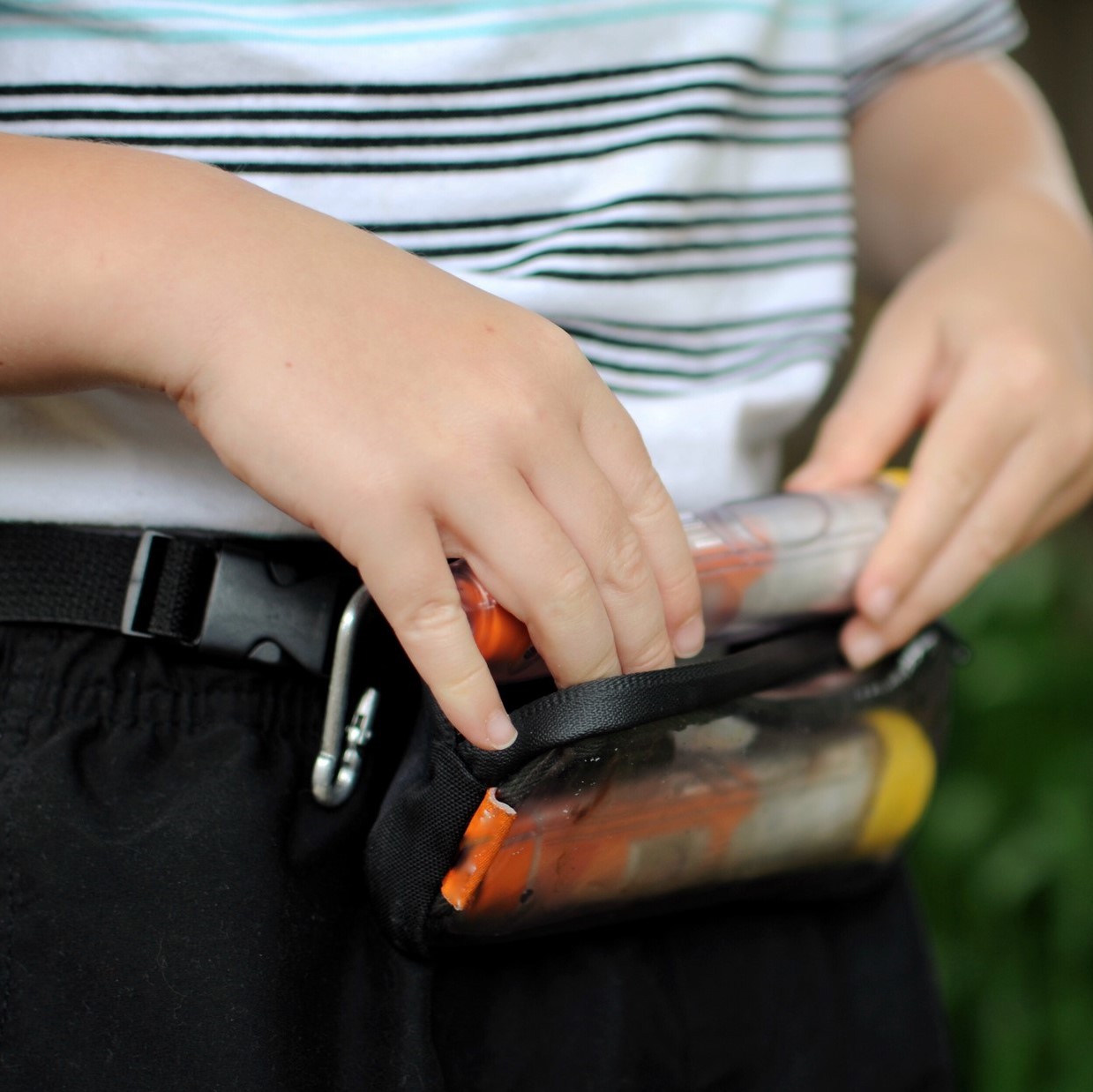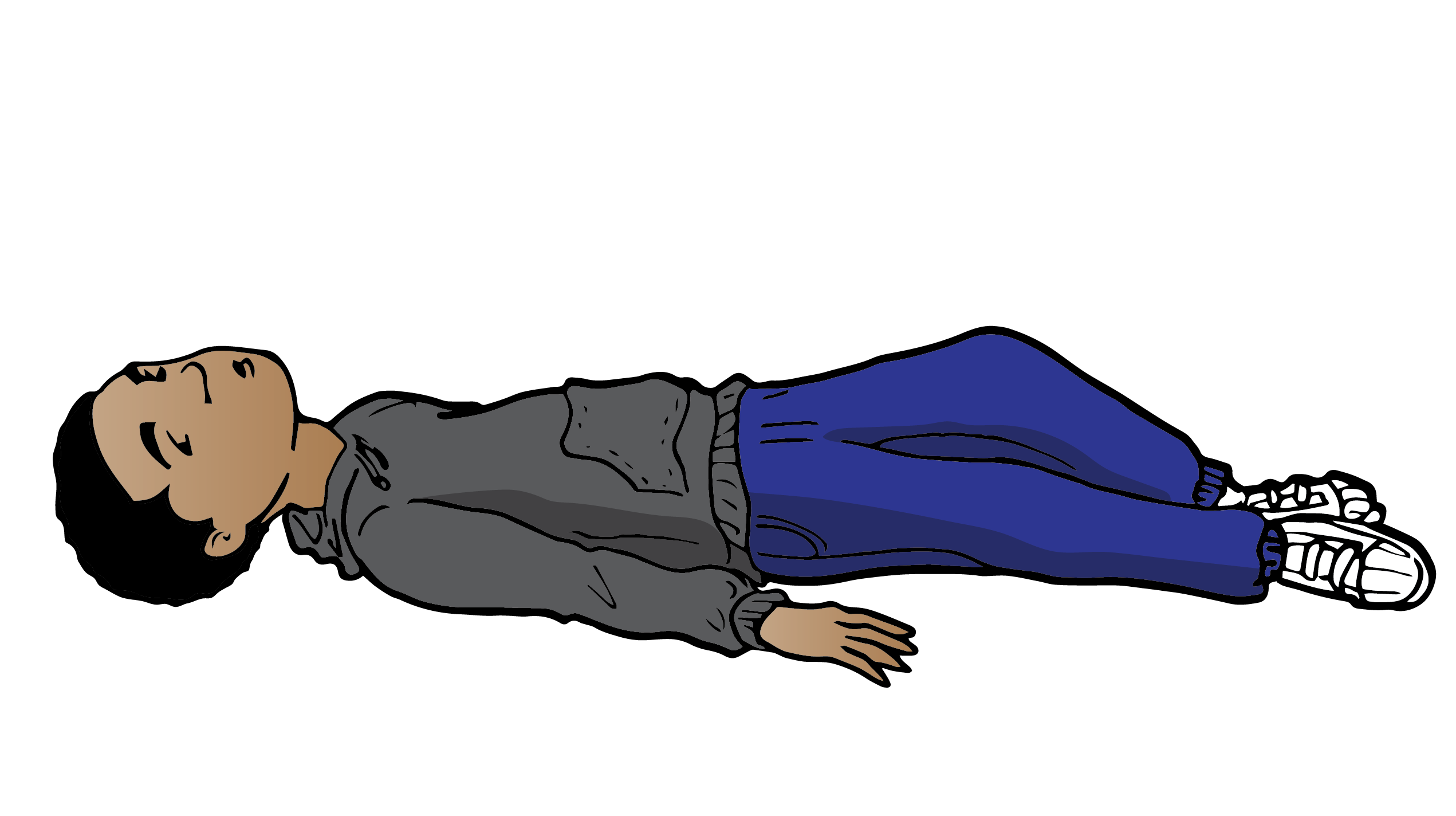Before an emergency: being prepared
1. Have a written Anaphylaxis Emergency Plan with your picture or a picture of your child.
Post this plan in a place where you can see it and have a copy available at all times. Any person caring for your child should have a copy. Adults with allergies should share it with their co-workers. It will be useful to refer to during an emergency.
Ask your doctor to help you fill out a copy and explain the emergency steps. You should be able to recognize the symptoms of anaphylaxis and treat a reaction with an auto-injector.
2. Learn to use an epinephrine auto-injector.
Talk to your doctor about when and how to use it. Each brand of auto-injector has a website with instructions and videos to help you learn how to use the device. Practice with a training device, which looks like a real auto-injector but does not contain a needle or the drug.
This will help you prepare for an emergency and feel more confident about using the auto-injector.
3. Always have an auto-injector available.
If you forget to bring it with you, go home and get it. It is wise to have two doses of epinephrine on hand, because some people may need a second dose during a reaction. Discuss this with your doctor.
4. Use medical identification jewelry, such as MedicAlert®.
If you or your child are alone or unconscious, the identification jewelry gives others credible information about one’s allergy.
During an emergency
If you think you are or your child is experiencing an anaphylactic reaction, follow the steps of the emergency plan. Talk to your doctor about when and how to use an auto-injector.
1. Give epinephrine, using an epinephrine auto-injector, at the first sign of a known or suspected anaphylactic reaction.
There are different body positions to consider:
When giving epinephrine, have the person sit or lie down.

After giving epinephrine, place the person on their back (if not already lying down) with their legs raised.
If the person has trouble breathing, they may prefer to stay sitting up.

If they feel sick or are vomiting, place them on their side.
Important: do not have them sit up or stand suddenly during an anaphylactic reaction, even after receiving epinephrine. Sudden changes of position can lead to severe complications, even death.
2. Contact emergency services.
Call 9-1-1 (or the emergency service in your area) and stay with your child while waiting for the ambulance. If you are having a reaction, ask someone to stay with you. Another person should show paramedics where you are or where your child is. Do not stand up or walk to the ambulance.
3. A second dose of epinephrine can be given as early as 5 minutes after the first dose if there is no improvement in symptoms.
Keep in mind that epinephrine can wear off, and you or your child may need more epinephrine, as well as other treatments. It is important to be taken to the emergency department to be seen by a doctor. A second wave of anaphylaxis is called a biphasic reaction. This happens after the initial symptoms are resolved and is usually several hours after the first reaction.
4. Go to the nearest hospital right away
- The paramedics should take you or your child to the ambulance by stretcher.
- Parent tip: Stay calm. Your child will feel less anxious if they see that you are in control.
- Ask the doctor to prescribe auto-injectors before leaving the hospital.
- Purchase the auto-injectors as soon as possible.
- Epinephrine is the first line treatment for anaphylaxis.
- It is life-saving medication for a severe allergic reaction.
- It works quickly and helps to treat life-threatening symptoms by opening up the airways and increasing blood pressure.
- Deaths from allergic reactions to foods are rare, but the risks are real and need to be taken seriously.
- In most cases, deaths from allergic reactions to foods have been caused by a delay in treatment with epinephrine.
- Epinephrine works the best when given early. It can be dangerous to wait to give epinephrine.
- Visit our emergency information page for 6 key points about emergency treatment from Canadian allergists.
Emergency information page- Check out resources by ECHO, ARCHE & TREKK to find out what to expect when visiting the emergency department.
- Infographic: What to expect at the emergency department
- Video: What to expect when visiting the emergency department during COVID-19
After an emergency: learning from a reaction
When you have a reaction, you may be left with feelings of anxiety.
- If possible, speak with the people involved and let them know you appreciate their support in helping you. Discuss what went well and what could be improved. Taking steps to improve emergency procedures will help to better protect yourself.
- Make an appointment to see your allergist to review the allergic reaction and the emergency plan.
- Think about speaking with a mental health professional if you are feeling extremely anxious about the reaction.
For parents
When your child has a reaction, it can be very stressful for both you and your child. Try to learn from your experience.
- If possible, speak with the people involved and let them know you appreciate their support in helping your child. Discuss what went well and what could be improved. Taking steps to improve emergency procedures will help to better protect you or your child.
- Sometimes people get excited during an emergency, raising their voices or crying.
- Let your child know that they didn’t do anything wrong and that no one was angry with them.
- Try to answer your child’s questions in a way that they can understand. You don’t have to have all the answers. It is fine to tell your child that you need to think about their question, or ask the doctor, and then get back to them with an answer. Remember, if your child feels that a topic makes you uncomfortable, they will keep questions to themselves and make up their own answers, which may cause unnecessary fear.
- Make an appointment to see your child’s allergist to review the allergic reaction and the emergency plan.
- Think about speaking with a mental health professional if you are feeling extremely anxious about the reaction.
- Teach your child about the possible symptoms of an allergic reaction.
- Tell your child to tell an adult immediately if they think they may have accidentally eaten an unsafe food or feel any symptoms of an allergic reaction.
- Let your child know that you keep their emergency medicine close by. If they have an allergic reaction, using it will help them to feel better quickly. It is never too early to help your child become confident about using an auto-injector.
- Talk to your child about the emergency steps, so that going to the hospital won’t be a surprise.
- Help your child to feel more in control by practising with a training device. Even preschool-aged children learn from medical play, just as they might by playing with a toy stethoscope before visiting their doctor. This can be a great way to make sure they understand about the auto-injector and how it will help them in an emergency.
- Your child may think the needle in the auto-injector is as long as the device. If your child is worried about this, you can tell them it is much shorter. The typical length of an auto-injector needle is less than 1 inch or 2.5 centimetres.


